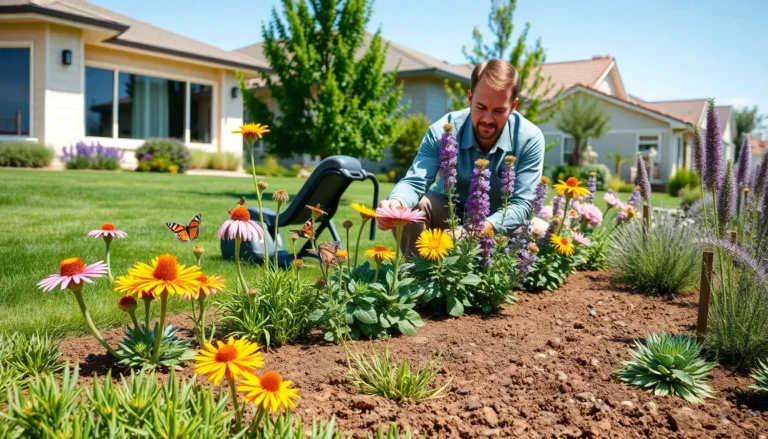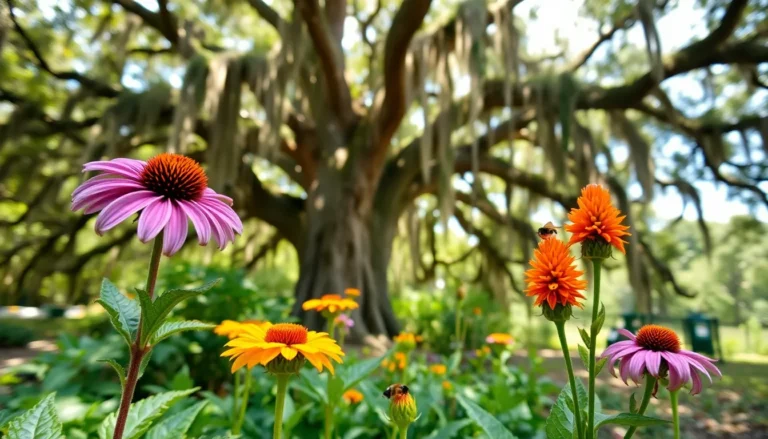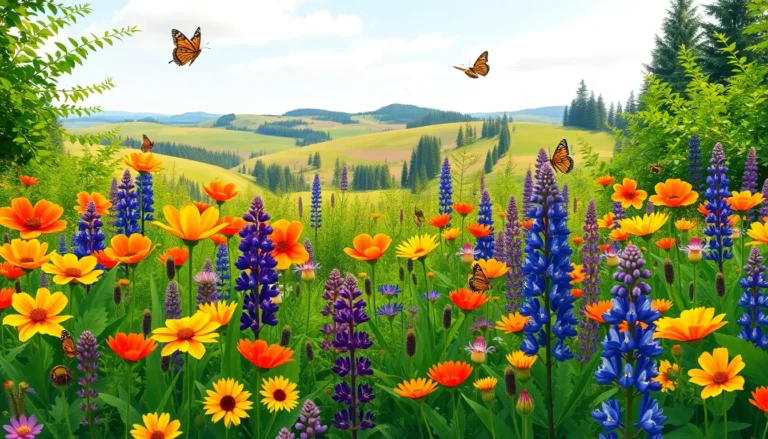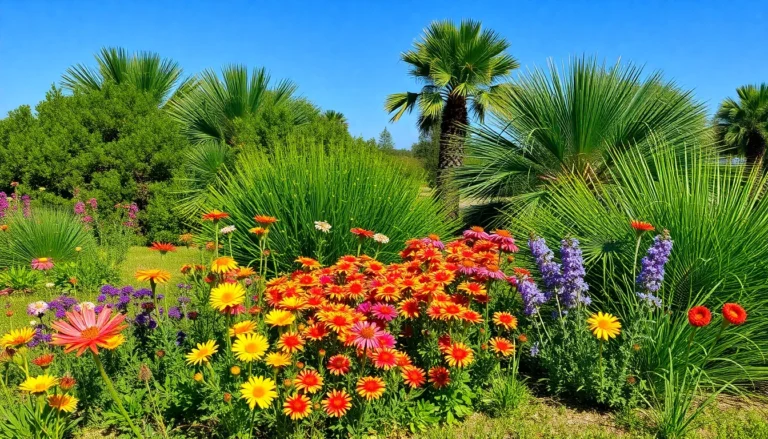When it comes to landscaping and gardening, why settle for ordinary when you can put Indiana’s native plants in the spotlight? These local flora don’t just bring vibrant colors and striking textures: they also work overtime to support ecosystems and enrich biodiversity. Interested in transforming your space into a haven? Stick around as we explore why these plants are not just a choice but a necessity for your garden, and have a few laughs along the way.
Indiana Native Plants
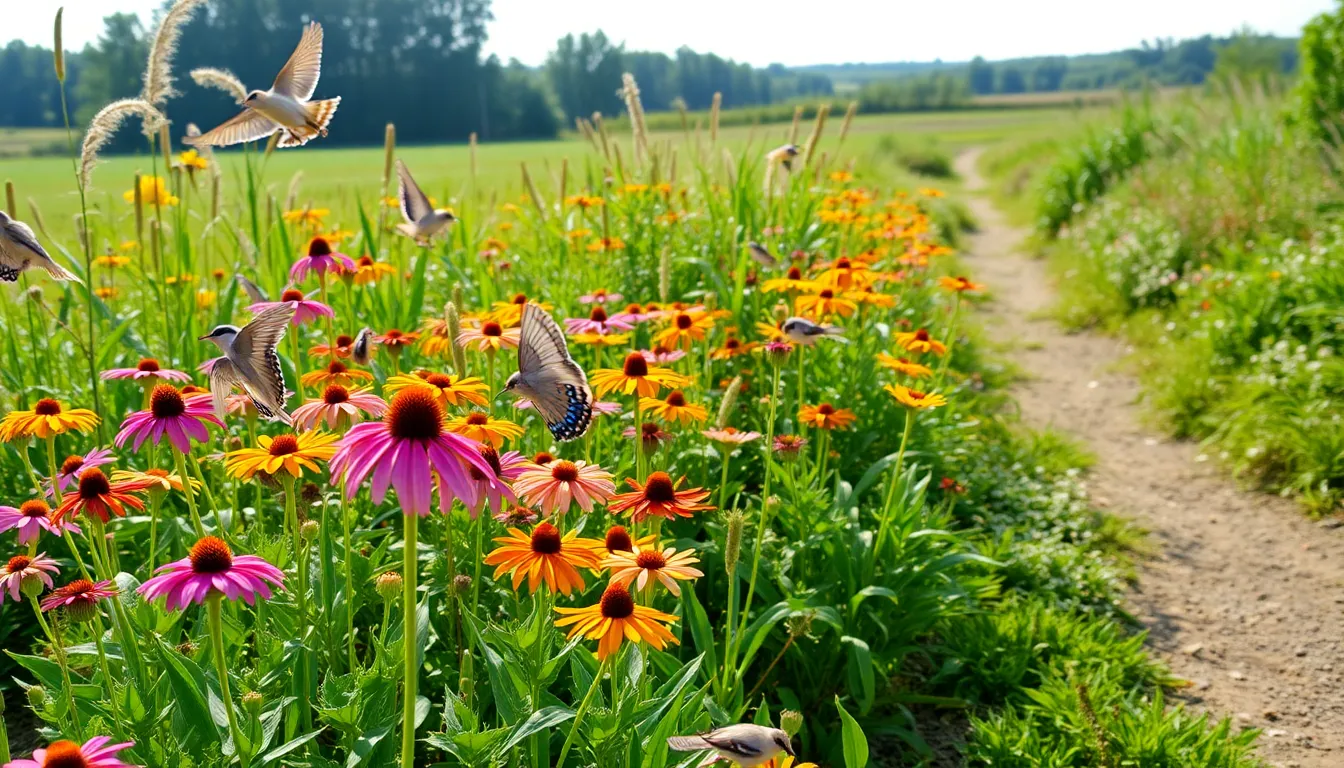
Benefits To Local Ecosystems
Native plants hold a special place in Indiana’s ecosystems. They are like the unsung heroes, providing essential resources such as food and shelter for local wildlife. Birds, butterflies, and bees thrive on the nectar and seeds these plants produce. Also, their deep-root systems help hold soil in place, preventing erosion and optimizing water retention. By creating a garden filled with native plants, one contributes to a sustainable environment that’s rich in life.
Role In Biodiversity
Biodiversity is the name of the game, and native plants are key players. They help maintain diverse ecosystems, offering habitats that support various species. Native flora promotes genetic diversity, which is vital for resilience against pests and diseases. Plus, they attract beneficial insects, bolstering local pollination and ensuring that plants reproduce. Essentially, by nurturing native plants, one is boosting Indiana’s natural biodiversity and fostering a healthier planet.
Cultural Significance In Indiana
Traditional Uses By Indigenous Peoples
Indiana’s native plants carry rich cultural significance that dates back centuries. Indigenous peoples relied on many local plants for food, medicine, and materials. From crafting tools to preparing herbal tisanes, the resources found in local flora were indispensable. Besides, these plants held spiritual meaning, often playing roles in ceremonies and traditions. Understanding this history not only honors Indiana’s heritage but also celebrates the relationship between its first inhabitants and the land.
Modern Landscaping Trends
Popular Indiana Native Plants
Modern landscaping trends are embracing native plants in a big way. Gardeners and landscape designers have wised up to the fact that these plants require less water, fewer chemicals, and encourage local wildlife. Some favorites include the butterfly weed, which attracts pollinators, and purple coneflower, known for its striking blooms. Incorporating these beauties not only beautifies yards but also supports local ecosystems.
Tree Species
When it comes to trees, Indiana offers a variety of fantastic options. The red oak is not just majestic: it also sustains wildlife with its acorns. Black cherry trees contribute to local biodiversity as they attract numerous bird species. Plus, these trees are well-adapted to the Indiana climate, resulting in healthy, robust growth without excessive maintenance.
Shrubs And Vines
In the shrub category, consider the serviceberry or berry-bearing winterberry holly. They not only provide rich foliage but also tasty treats for local critters. Meanwhile, vines like the native Virginia creeper can cover fences and trellises while offering food for birds. These lush, climbing plants add vertical interest to a garden, making it visually dynamic while being ecologically sound.
Wildflowers And Grasses
No native garden is complete without a punch of color from wildflowers and grasses. Prairie grass, such as big bluestem, creates a beautiful swath of green, while vibrant wildflowers like black-eyed Susans add splashes of gold. These plants are not just eye-catching: they promote soil health and prevent weed growth, making them a staple for any sustainable landscape.
How To Incorporate Native Plants In Your Garden
Design Tips For Native Plant Gardens
Creating a native plant garden isn’t rocket science, it’s art. Consider using a variety of heights, colors, and textures to create a visually stunning landscape. Grouping similar plants together mimics natural settings and establishes a sense of harmony. Rotating colors throughout the seasons keeps the garden lively, ensuring there’s always something in bloom.
Maintenance And Care
Once the native garden is established, upkeep is relatively straightforward. Native plants generally require less water and fewer pesticides, making them low-maintenance lovelies. Regular weeding, occasional pruning, and seasonal clean-ups are typically all that’s needed. Eventually, investing the time in setup will reward one with a thriving garden that benefits both nature and their personal sanctuary.


